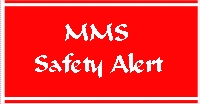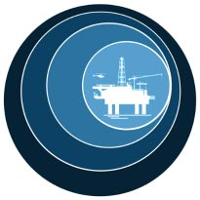Subsea Equipment Failure to Deepwater GOM Pollution
Effective Date: 5/29/2002
 | U.S. Department of the Interior |
| Safety Alert No. 200 May 29, 2002 | Contact: Jack Williams |
Subsea Equipment Failure Leads to Deepwater GOM Pollution
Recently, an operator conducted an ROV intervention to replace a defective choke in a deepwater, subsea oil well. Following the intervention, as the high volume well was being returned to production, a PSL alarm and sudden, unusual pressure and data readings were received at the control room monitoring screens. Though the boarding valve was subsequently manually closed to protect the platform, the wing valve on the subsea tree remained open (its safety system was bypassed for well startup operations) while the source of the PSL alarm was investigated. After approximately fifteen minutes, the wing valve was closed.
An MMS investigation determined the reasons for the crude oil/gas discharge were as follows:
1. The choke was not set in the intended profile but was prematurely set in the tapered guide sleeve, allowing the choke to be expelled when faced with full wellhead temperature, pressure, and vibration. This failure to fully set in the designed profile was not discovered by ROV visual monitoring.
2. An unclear emergency chain of command and failure to discuss potential problems at the pre-op meeting contributed to the delay in the shut-in of the well. Additionally, the complexity of the monitor screens hindered quick evaluation of the safety system status.
The MMS recommends to the operators:
- During the pre-job safety meeting a review of what could go wrong is important. A discussion of the chain-of-command and decisionmaking in the event of an emergency should be a part of the pre-job meeting, especially when the offshore work environment contains complex reporting and organizational relationships.
- If possible, for subsea well ROV interventions, the mechanical devices being serviced or replaced and the tools so employed should be designed so that effective visual monitoring of the operation can be accomplished. If possible, successful performance of the work should be able to be confirmed visually by ROV.
- When designing control room monitoring systems, consideration should be given to incorporating fail-safe hardware or software to limit the need to bypass critical safety systems. Further, the design should consider having the display screens be as clear and simple as possible so that a person newly arrived at the screen in the midst of an emergency can quickly understand the status of the safety systems.






